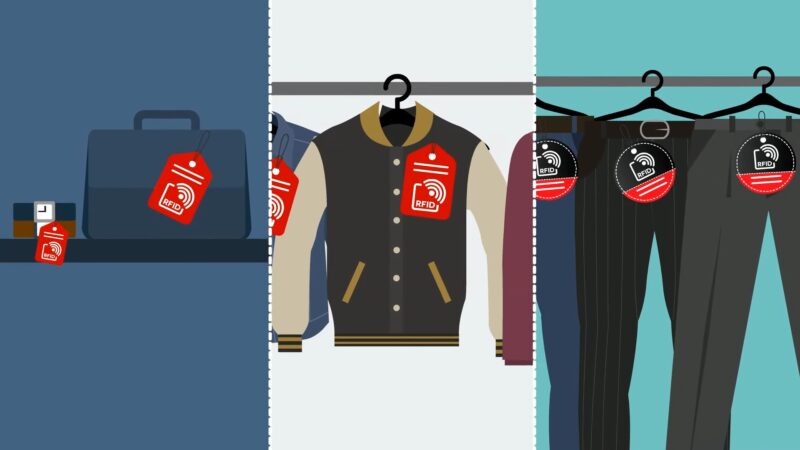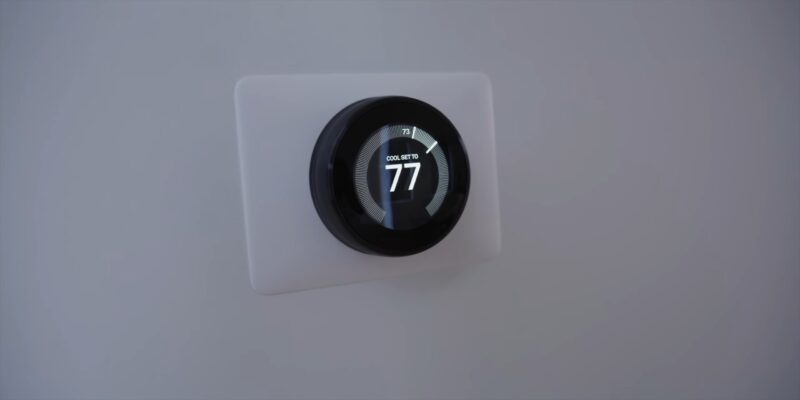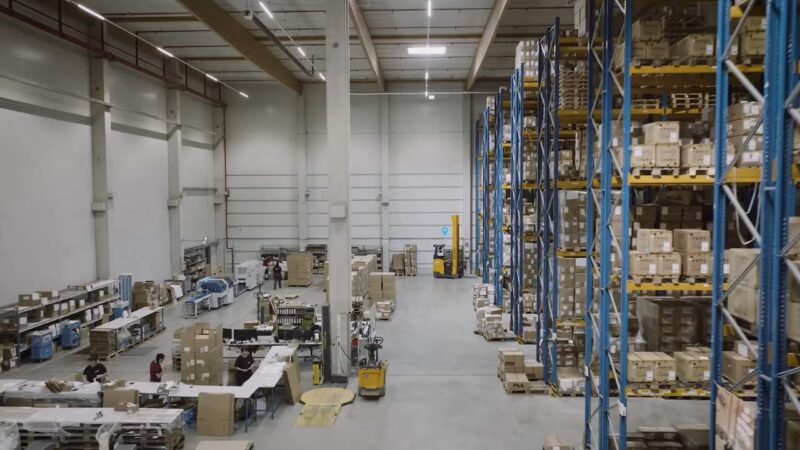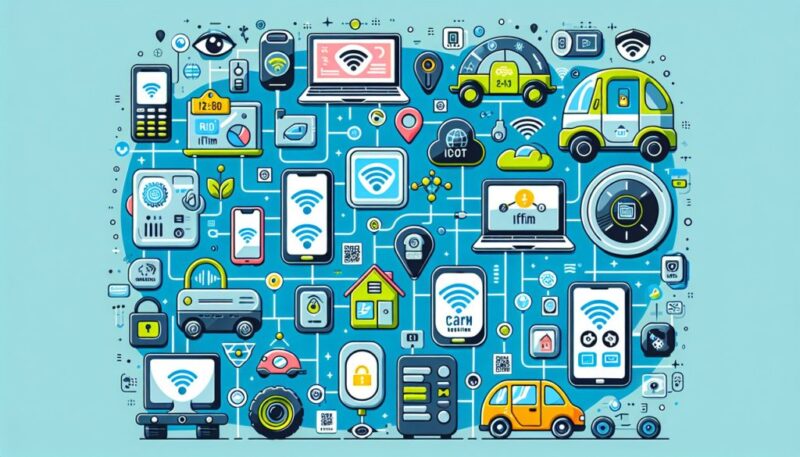In our rapidly evolving digital world, two technologies often come up in discussions about automation, tracking, and smart devices: RFID (Radio-Frequency Identification) and IoT (Internet of Things).
While they may seem similar at a glance, RFID and IoT have distinct differences and applications that set them apart. This blog post will explore their complexities to provide a clear understanding of how they differ and where they intersect.
RFID: The Basics
RFID is a technology that uses electromagnetic fields to automatically identify and track tags attached to objects. These tags contain electronically stored information, which can be read from a distance.
There are two main types of RFID tags: passive and active. Passive tags draw power from the reader’s electromagnetic field, while active tags have their own power source.
How It Works
The RFID system consists of three components: a tag, a reader, and an antenna. The reader sends out electromagnetic waves that activate the tag. Once activated, the tag transmits data back to the reader.
This technology is widely used for tracking assets, managing inventory, and access control systems.
Applications
RFID technology has a broad range of applications. In retail, it’s used for inventory management and theft prevention. In logistics, RFID tracks goods throughout the supply chain. Other applications include access control (like keycards), library book tracking, and even pet microchips.
What is IoT?
The Internet of Things (IoT) refers to a network of physical objects (‘things’) embedded with sensors, software, and other technologies for the purpose of connecting and exchanging data with other devices and systems over the Internet.
Unlike RFID, IoT encompasses a broader range of technologies and is not limited to identification and tracking.
How It Works
IoT devices collect data from their environment using embedded sensors and software. This data is then transmitted over the Internet to other devices or a central server. IoT devices can range from simple household items like smart thermostats to complex industrial machines.
Applications
The applications of IoT are vast and varied. In smart homes, IoT devices include things like smart thermostats, security cameras, and lighting systems. In healthcare, IoT is used for patient monitoring and in smart medical devices.
Other applications include smart cities, agricultural technology, and environmental monitoring.
RFID vs. IoT: The Key Differences
Now that we have a basic understanding of both systems, let’s see their key differences.
| Aspect | RFID | IoT |
|---|---|---|
| Technology Focus | Primarily focused on identification and tracking. | Broader scope, including tracking, data collection, and exchange. |
| Range and Power | Limited range, especially for passive tags. Relies on proximity to a reader. | Longer range with connectivity options like Wi-Fi or cellular networks. Often, they have their own power source. |
| Data Complexity | Simple data, typically limited to identification information. | Complex and diverse data collection, from temperature readings to video feeds. |
| Connectivity | Requires a specific reader for communication. | Uses standard internet protocols for wide-ranging communication. |
| Interactivity | Mostly unidirectional (tag responds to the reader). | Supports bidirectional communication for complex interactions and automation. |
| Applications | Used largely for tracking and identification. | Wide range of applications including automation, remote monitoring, and predictive maintenance. |
RFID at Work
Retail Industry

In retail, RFID technology revolutionizes inventory management. For example, a major clothing retailer implemented this technology to track items across its stores. This resulted in reduced inventory errors, improved supply chain efficiency, and enhanced customer experience as products became easier to locate.
Healthcare Sector
RFID tags are used in hospitals for tracking medical equipment, reducing the time spent in locating vital tools. A case study in a large hospital showed that tags attached to equipment drastically cut down the time nurses spent searching for items, thereby increasing time spent on patient care.
Wildlife Tracking
RFID technology is not just limited to urban settings. In wildlife conservation, RFID tags are used to monitor the movements and behaviors of animals. This provides invaluable data for conservation efforts and helps in tracking the health and movements of endangered species.
IoT
Smart Homes

One of the most relatable examples of IoT is smart home devices. Thermostats like Nest learn a homeowner’s schedule and adjust heating and cooling for energy efficiency. Smart lights and security systems that can be controlled remotely are also becoming increasingly common, offering convenience and enhanced security.
Agriculture
In agriculture, IoT devices are used to monitor crop fields. Sensors collect data on soil moisture, temperature, and crop health, enabling farmers to make informed decisions about irrigation and pest control, leading to increased crop yields and reduced resource use.
Environmental Monitoring
IoT technology plays a crucial role in environmental monitoring. Sensors deployed in various ecosystems can collect data on pollution levels, weather conditions, and wildlife populations.
This data is crucial for researchers and policymakers in making informed decisions about environmental protection and conservation.
The Synergy of RFID and IoT

While RFID and IoT are distinct technologies, they can work together to create even more powerful solutions.
RFID-Enhanced IoT
In some cases, IoT systems integrate RFID technology for enhanced tracking capabilities. For example, in a smart warehouse, IoT sensors can monitor environmental conditions like temperature and humidity, while RFID tracks the movement and location of goods.
Data-Driven Decisions
The combination of RFID’s tracking capabilities and IoT’s data collection and analysis power allows for more informed decision-making in various sectors. For instance, in logistics, this synergy can lead to improved supply chain visibility and efficiency.
FAQs
Can RFID technology be integrated into IoT systems?
Yes, it can. RFID tags can be used to enhance the tracking capabilities of an IoT system, allowing for more precise location tracking of objects within the network.
Is IoT more secure than RFID?
The security of both systems depends on their implementation and use case. IoT, with its broader internet connectivity, can be more vulnerable to cyber-attacks. However, both technologies require robust security protocols to protect data and prevent unauthorized access.
How do environmental factors affect RFID and IoT performance?
Environmental factors like metal and liquids can interfere with RFID signals, affecting its performance. IoT devices, depending on their design, can also be sensitive to environmental conditions such as extreme temperatures and humidity.
Can RFID and IoT be used for personal tracking?
While RFID can be used for personal tracking in contexts like access control, its range is limited. IoT devices, with GPS and internet connectivity, offer more comprehensive options for personal tracking, such as smartwatches and smartphones.
Are there any privacy concerns with RFID and IoT?
Yes, both systems raise privacy concerns. RFID tags can be scanned without the owner’s knowledge, potentially revealing information. IoT devices, with their extensive data collection, also pose significant privacy risks if not properly managed.
How does the cost of implementing RFID compare to IoT?
Generally, RFID is less expensive to implement than IoT. RFID tags are relatively cheap, and the infrastructure is simpler. IoT implementation can be more costly due to the need for more complex devices, sensors, and a robust network infrastructure.
Summary
While RFID offers efficient solutions for tracking and identification, IoT opens up a universe of possibilities for interconnectivity and data exchange. Both technologies have their unique strengths and applications, and recognizing these distinctions can help individuals and businesses make informed decisions about their technology investments.
